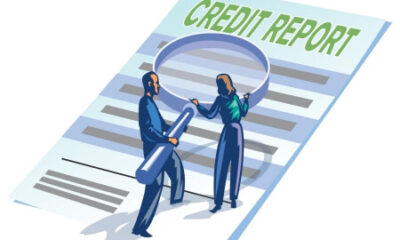Uncategorized
Central Bank Announces New Policy: Impact on Consumer Credit
In a landmark move, the Central Bank recently announced a new policy that significantly impacts consumer credit, marking a pivotal moment in the financial landscape. This policy, aimed at streamlining credit processes and enhancing consumer protection, is expected to bring widespread changes for both consumers and financial institutions.
Understanding the New Policy
At its core, the new policy introduced by the Central Bank is a comprehensive framework designed to regulate the way consumer credit is managed. The policy includes tighter controls on interest rates, enhanced transparency for loan products, and stricter criteria for creditworthiness assessments. These measures are in response to growing concerns about over-indebtedness among consumers and the need for more responsible lending practices.
Interest Rate Regulations
One of the most significant aspects of the policy is the regulation of interest rates on consumer loans. The Central Bank has set a cap on the maximum interest rate that can be charged, aiming to prevent consumers from falling into debt traps due to excessively high rates. This measure is particularly important in protecting vulnerable borrowers who might not have access to mainstream banking services.
Transparency and Consumer Education
Another key element of the policy is the emphasis on transparency. Lenders are now required to provide clear and comprehensive information about their loan products, including all fees, charges, and the total cost of credit. This initiative is expected to empower consumers, enabling them to make more informed financial decisions.
Furthermore, the Central Bank has launched a consumer education program. This initiative focuses on improving financial literacy, helping consumers understand credit products, and teaching them how to manage debt responsibly.
Stricter Creditworthiness Assessments
The new policy also introduces more stringent criteria for assessing a borrower’s creditworthiness. Lenders are now required to conduct thorough background checks and evaluate the financial stability of applicants more rigorously. This move is intended to ensure that loans are granted only to those who have the means to repay them, thereby reducing the risk of defaults and non-performing loans.
Impact on Consumers
For consumers, these changes are a double-edged sword. On one hand, the policy offers better protection from predatory lending practices and unmanageable debt levels. Borrowers can expect more transparent loan agreements and potentially lower interest rates.
On the other hand, the stricter creditworthiness assessments might mean that some consumers, especially those with lower incomes or poor credit histories, may find it harder to access credit. This could have implications for individuals who rely on credit for essential expenses.
Impact on Financial Institutions
For banks and other lending institutions, the new policy necessitates significant adjustments. They will need to revise their loan products, implement more robust credit assessment processes, and ensure compliance with the new transparency requirements. While this may increase operational costs in the short term, in the long run, it could lead to a healthier, more sustainable credit market.
Long-term Economic Implications
Economically, the policy is expected to have far-reaching effects. By preventing over-indebtedness, it aims to create a more stable financial environment. This stability is crucial for economic growth, as it fosters consumer confidence and encourages responsible spending and borrowing.
However, there could be initial challenges as both consumers and financial institutions adapt to the new norms. The reduced availability of credit to certain segments might temporarily affect consumption patterns and slow down economic activities.
Looking Ahead
The Central Bank’s new policy on consumer credit is a significant step towards a more responsible and transparent financial system. While it presents certain challenges, the long-term benefits for economic stability and consumer protection are undeniable.
As the policy is implemented, it will be crucial for all stakeholders — the government, financial institutions, and consumers — to work together to ensure a smooth transition. Continuous monitoring and adjustments may be needed to strike the right balance between protecting consumers and ensuring access to credit.
In conclusion, the new policy marks a new era in consumer credit, one that promises greater fairness, transparency, and responsibility. It is a welcome change that, if managed well, could lead to a stronger, more resilient economy.
Uncategorized
Mortgage Rates in 2025 – What Homebuyers Need to Know Now
As we close out the first quarter of 2025, the financial landscape for prospective homebuyers is shifting, and mortgage rates are at the heart of the conversation. If you’re dreaming of owning a home or refinancing your current mortgage, understanding where rates stand today—and where they might be headed—can make or break your financial planning. At Free Credit Insights, we’re committed to keeping you informed about the latest trends impacting your wallet. Let’s dive into the current state of mortgage rates as of March 31, 2025, and what it means for your credit and homeownership goals.
Where Are Mortgage Rates Today?
According to recent data highlighted by CNET Money, mortgage rates as of March 31, 2025, reflect a dynamic market influenced by economic policy, inflation, and global events. While exact daily figures fluctuate, the average 30-year fixed mortgage rate has hovered around levels that are slightly lower than the peaks seen in late 2024, thanks to subtle shifts in the Federal Reserve’s monetary stance. For context, Bankrate’s aggregated data shows that rates have eased from their highs but remain elevated compared to the ultra-low rates of the early 2020s. This moderation comes as the Fed has signaled a cautious approach to rate cuts, balancing inflation control with economic growth.
For example, a week ago, the average 30-year fixed rate was reported at approximately 6.5%, down from 6.7% earlier in March, per CNET’s analysis. Meanwhile, 15-year fixed rates, popular among refinancers, sat closer to 5.8%. These numbers aren’t set in stone—daily changes are driven by lender competition, Treasury yields, and investor sentiment—but they give a snapshot of a market that’s cooling off slightly yet still challenging for borrowers with tight budgets.
Why Rates Matter to Your Credit
Your credit score plays a pivotal role in the mortgage game, and at Free Credit Insights, we can’t stress this enough. Lenders use your score to determine not just your eligibility but also the interest rate you’ll lock in. A difference of even half a percentage point can translate to thousands of dollars over the life of a loan. For instance, on a $300,000 mortgage at 6.5% over 30 years, you’re looking at roughly $682,000 in total payments (principal plus interest). Bump that rate to 7%, and the total jumps to over $718,000—a $36,000 difference tied directly to your creditworthiness.
With student loan delinquencies re-entering credit reports in 2025 (more on that later), maintaining a strong score is more critical than ever. Missed payments or high credit utilization can drag your score down, pushing you into a higher-rate bracket. The good news? Free tools like Credit Karma or your bank’s credit monitoring can help you track your score without costing a dime, aligning perfectly with our mission at Free Credit Insights to empower you with accessible financial knowledge.
What’s Driving Mortgage Rates in 2025?
Several forces are shaping today’s mortgage environment. First, the Federal Reserve’s actions—or inactions—are front and center. While the Fed doesn’t directly set mortgage rates, its federal funds rate influences the 10-year Treasury note, a benchmark for long-term loans. Posts on X and financial outlets like Reuters suggest the Fed is holding steady as of late March, with quantitative tightening (QT) tapering off from April 1. This could ease pressure on yields, potentially nudging mortgage rates lower in the coming months.
Second, economic uncertainty looms large. Goldman Sachs recently raised its U.S. recession odds to 35% as of March 31, per Reuters, citing trade tensions and geopolitical risks. If a recession hits, the Fed might accelerate rate cuts, driving mortgage rates down further—but that’s a gamble, not a guarantee. Meanwhile, oil prices climbing 2% to a five-week high (Reuters) signal inflationary pressures that could keep rates elevated if costs spiral.
Finally, consumer behavior and lender competition are wild cards. Private credit firms are squeezing margins to win deals, per Bloomberg, which might trickle into mortgage markets as banks vie for borrowers. For now, though, rates reflect a cautious optimism—lower than last year’s peaks but not low enough to spark a buying frenzy.
What This
What This Means for Homebuyers
If you’re in the market, timing is tricky. Katherine Watt, a CNET Money writer, advises buyers to focus on what they can control: credit, savings, and loan shopping. A stellar credit score (think 740+) can snag you the best rates, while a larger down payment reduces your loan-to-value ratio, another lender-friendly factor. Comparing offers from multiple lenders—online banks, credit unions, and traditional institutions—can also uncover hidden savings.
Uncategorized
How Fast Will a Car Loan Raise My Credit Score?
Introduction
Credit scores are a crucial aspect of our financial lives. They influence the interest rates we receive on loans, our ability to rent or buy a home, and sometimes even job opportunities. One common question people have is: “How fast will a car loan raise my credit score?” This article aims to answer that question in detail.
Understanding Credit Scores
Before we delve into the impact of a car loan on your credit score, it’s important to understand what a credit score is. A credit score is a numerical representation of your creditworthiness, based on your credit history. The higher your score, the more likely lenders are to consider you a low-risk borrower.
The Impact of a Car Loan on Your Credit Score
When you take out a car loan, it has several effects on your credit score:
- New Credit Inquiry: When lenders check your credit for a loan application, it results in a hard inquiry on your credit report. This can temporarily lower your credit score.
- Credit Mix: Having a variety of credit types, such as credit cards and loans, can positively impact your credit score. Therefore, adding a car loan to your credit mix can potentially increase your score.
- Payment History: Your payment history is the most significant factor in your credit score. Making your car loan payments on time every month can help improve your credit score over time.
How Fast Can You See Changes?
The speed at which a car loan can raise your credit score depends on several factors, including your current credit score, your credit history, and how well you manage your loan. If you make timely payments and manage your loan well, you could start to see an improvement in your credit score within a few months. However, it’s important to note that improving a credit score is usually a slow and steady process.
Conclusion
In conclusion, a car loan can help raise your credit score, but it’s not an overnight process. It requires good financial habits and time. Always ensure to make your payments on time, keep your balances low, and manage your debts effectively.
Remember, while taking a car loan can help improve your credit score, it’s important to consider your financial situation carefully. Borrowing more than you can afford can lead to financial difficulties and can harm your credit score.
I hope this article has provided some insight into the impact of a car loan on your credit score and how quickly you can expect to see changes. Remember, everyone’s credit situation is unique, so the changes may not be the same for everyone.
Please note that this article is intended to provide general information and should not be used as financial advice. Always consult with a financial advisor or professional for advice tailored to your specific circumstances.
Uncategorized
Understanding Your Starting Credit Score

When it comes to personal finance, one of the most crucial elements to understand and manage is your credit score. This three-digit number is a key factor that lenders use to decide whether you qualify for a loan or credit card, as well as what interest rates you’ll be offered. But if you’re new to the world of credit, you might be wondering, “What credit score do you start with?”
The Myth of the Starting Credit Score
Firstly, it’s essential to dispel a common myth: you don’t actually start with a credit score at all. When you first enter the credit system, you are essentially a blank slate to credit bureaus. This state remains until you engage in activities that prompt financial institutions to report your financial behavior to the major credit bureaus (Equifax, Experian, and TransUnion).
Building Your Credit Profile
Your credit score is calculated based on the information in your credit report, which includes your history of borrowing and repaying banks, credit card companies, and other lenders. Here are the key components that determine your credit score:
- Payment History (35%): This is the record of how timely you’ve been with payments on credit accounts, including credit cards, loans, and other debts.
- Amounts Owed (30%): Known as your credit utilization ratio, this measures how much credit you’re using compared to how much you have available.
- Length of Credit History (15%): Longer credit histories are generally seen as less risky because they provide more data on how you manage credit.
- Credit Mix (10%): Having a variety of credit types (e.g., credit cards, mortgage, auto loans) can be beneficial.
- New Credit (10%): Opening several new credit accounts in a short period can be seen as risky behavior.
Steps to Establishing Credit
For those starting from zero, here are actionable steps to begin building your credit:
- Apply for a Starter Credit Card: Look for cards designed for people with no credit history, such as secured credit cards or student credit cards.
- Become an Authorized User: Being added to someone else’s credit card account can help you build credit through their credit history.
- Take Out a Credit-builder Loan: These loans are designed specifically to help individuals build credit.
- Use Credit Responsibly: Always pay your bills on time, keep your credit utilization low, and avoid opening too many accounts at once.
The Journey to Your First Credit Score
Once you’ve engaged in credit activities that are reported to the credit bureaus, you’ll need to wait for your credit score to be generated. It typically takes about six months of credit activity to establish enough history for a FICO score, the most commonly used scoring model, to be calculated.
What Score Will You Start With?
When your credit score is finally generated, it won’t start at zero, but it likely won’t be very high either. For FICO scores, the range is 300 to 850, with scores below 580 considered poor. Depending on how you’ve managed your initial credit activities, your starting score is likely to be somewhere above 300 but below the average range, which provides you with a foundation to improve upon.
Importance of Monitoring and Improving Your Credit Score
Your credit score is a dynamic number that changes as your credit report updates with your financial behaviors. Regularly monitoring your credit score is crucial for understanding how your financial actions affect your score and for ensuring there are no inaccuracies in your credit report.
Strategies for Improving Your Credit Score
Improving your credit score is a gradual process that involves consistent financial responsibility. Here are some strategies:
- Pay Bills on Time: Your payment history is the most significant factor affecting your credit score. Set reminders or automate payments to ensure you never miss a due date.
- Keep Balances Low: Aim to use no more than 30% of your available credit at any time to maintain a low credit utilization ratio.
- Avoid Opening Too Many Accounts: Each time you apply for credit, it can slightly lower your credit score. Be selective about applying for new credit.
- Regularly Check Your Credit Report: Ensure your credit report is accurate and free of errors by checking it at least once a year with each of the major credit bureaus.
Understanding and managing your credit score from the start is crucial for financial health. By taking deliberate steps to establish and improve your credit, you lay the foundation for a stable financial future, which can open doors to important life milestones like buying a home or car.
-

 Business2 years ago
Business2 years agoHow To Check Your Business Credit Score
-

 Credit2 years ago
Credit2 years agoBetter Cash Installment Loan Offer Review
-

 Credit2 years ago
Credit2 years ago7 Tips for Managing Your Finances in Your 20s
-

 Family2 years ago
Family2 years agoThe Importance of Saving Money on Baby Products
-
Credit2 years ago
Best Cash Back Credit Cards of 2023: The Ultimate Guide
-

 Credit2 years ago
Credit2 years agoWhat Is The Impact of Student Loan Debt on Your Credit Score?
-
Credit1 year ago
Bouncing Back: A Guide to Understanding and Recovering from Sudden Credit Score Drops
-

 Credit2 years ago
Credit2 years agoUnlocking Potential: The Capital One Credit Increase Hack
